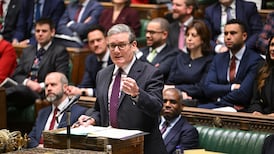What’s been going on at Westminster?
Theresa May's government caved in to hardline Brexiteers in Jacob Rees-Mogg's European Research Group (ERG) on Monday night by accepting four amendments to a customs bill. They rule out a customs union with the EU without primary legislation; say Britain can't collect tariffs for the EU unless the EU does the same for Britain; demand that Britain must have a separate VAT policy to the EU; and rule out different customs arrangements for Northern Ireland and the rest of the UK.
Conservative Remainers, outraged by the government’s capitulation, proposed their own amendments to a trade bill on Tuesday. The most important, which was defeated by six votes, would have kept Britain in a customs union with the EU unless an arrangement for frictionless trade was agreed by January 2019. Another amendment, to keep Britain aligned to the European medicines regulatory network, was passed.
What does all this mean for the Chequers proposal?
The prime minister says the amendments accepted on Monday night make no difference to the Chequers plan because they reflect government policy. But Brexiteers think they have killed the proposal, pointing out that it is now under fire from both wings of the party, with former education secretary and Remainer Justine Greening rejecting it on Monday.
The amendment on collecting tariffs for the EU does appear to contradict the Chequers plan and last week's white paper, which did not demand reciprocity for the EU. More importantly, the Brexiteers' show of strength serves as a reminder to the prime minister that they could torpedo any deal she brings back from Brussels.
What does it mean for the Border backstop?
The amendment ruling out different customs arrangements for Northern Ireland is in conflict with the EU's backstop proposal, which would treat Northern Ireland as part of the EU customs union after Brexit. But May has already rejected that proposal, asserting that no British prime minister would ever agree to impose a border in the Irish Sea.
This amendment was nodded through on a voice vote on Monday night, reflecting the support of many Labour MPs for the prime minister's position. But as negotiations over the backstop continue in Brussels over the next few weeks, the EU side will play down the impact of a different customs and regulatory regime for Northern Ireland in the hope of reaching agreement.
The EU’s position remains that, without an agreement on the backstop, there will be no withdrawal agreement and no transition period after Brexit. By putting Britain’s opposition to the EU backstop proposal into law, May’s government has limited its room for manoeuvre in negotiations.
What happens next?
The prime minister meets the 1922 Committee of Conservative backbenchers on Wednesday amid rumours that letters calling for a confidence vote in her leadership are piling up. It takes 48 MPs to force such a vote but 159 to win it and if May wins, she cannot be challenged for another 12 months.
Parliament is due to break up for the summer next week, and the government on Tuesday night abandoned a plan to start the holidays five days early after it became clear that most MPs would oppose it. Brexit negotiations continue in Brussels throughout the summer with both sides saying they want to agree a deal by October. This week’s shenanigans at Westminster have weakened May’s hand in Brussels and made a deal in October less likely.












